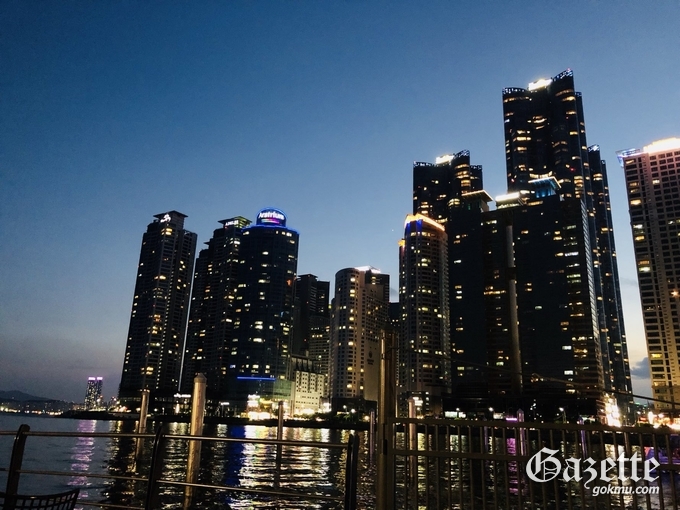
We often see people from other countries travel to Korea, but foreign students, such as Keimyung University foreign exchange students, may lack the opportunity to actually travel around Korea. Foreign students may feel burdened to travel in Korea as it is not easy for foreign students to make money for travel despite being curious about not only Daegu, but also various regions of Korea. Perhaps there might be limitations on transportation because of the small expenses for visiting various regions. For example, foreign students who visit Korea for the first time are limited in how far they can travel in Korea because most of students do not drive so travel costs can be quite high. To overcome these limitations, I would like to introduce to foreign students a way to reduce the burden of travel expenses through a free travel pass: ‘Rail-ro’.
The Rail-ro Pass is a train ticket that allows passengers under the age of 25 to use trains for an unlimited amount over a certain period of time. The target audience is Koreans and foreigners under the age of 25. When you ride a train using a Rail-ro Pass, there are reserved seats for Rail-ro Pass holders on every train. Also, if pass holders want to specify a seat, you can purchase a seat at a 60% discount using this pass.

Using Rail-ro offers many benefits not only the unlimited use of trains. There is also a departure station benefit where you can freely specify the departure station of the train stations you are going to. More specifically, there are a variety of benefits for each departure station, including accommodation discounts, gift offers, and experience tours. It is a good idea to look for the benefits that are interesting to you, and to specify the departure station. You can get this information from the website www.rail-ro.com.
Also, because foreign students are not familiar with the geography of Korea, it can be difficult to create a travel route. To this end, many recommended routes are posted on the Rail-ro homepage or on blogs. Typical of the recommended courses are Gangwon-do, Gyeongbu Line, Jeolla-do, and East Coast course.
The Gangwon-do course, which is in the northeast of Korea follwos: Chuncheon - Wonju - Taebaek. It is a good healing course to watch the scenery of snow on the branches outside the window while riding the train. It is also good to find the winter festivals that are held everywhere.
The Gyeongbu Line is a railway that was installed between Seoul and Busan. The Gyeongbu Line course travels along the route: Seoul - Daejeon - Busan. The Gyeongbu Line course explores the capital city and metropolitan cities of Korea. If you want to experience various urban scenery, I recommend the Gyeongbu Line course.
Jeolla-do is in the southwestern part of Korea, and the Jeolla-do course leads to Suncheon -Yeosu - Jeonju - Gwangju. It is no exaggeration to say that Jeolla-do is mainly a food course because Jeolla-do is famous for its delicious Korean food. If you want to visit the Hanok Village of Jeonju, Yeosu Night Sea, and various restaurants, Jeolla-do is the recommended course.
Finally, the East Coast course travels Busan - East Sea - Gangneung. The East Coast course is a course for sea enthusiasts as you can walk on the beach throughout the various stops on your trip. Even though it is all along the East Sea, each region has a different feeling of the East Sea. 
For this article, I took a preliminary tour based on the path that foreigners visit frequently in Korea. According to a survey of foreign tourists by the Ministry of Culture, Sports and Tourism in 2017, the most visited area by visitors to Korea was Seoul, and the second most visited place was Busan. Based on the results of this survey, I set the Rail-ro route to Busan - Seoul.
On the first day, I went to Gwangalli beach and The Bay101 in Busan. Gwangalli Beach is famous for Gwangan Bridge and Waterside Park. The Waterside Park is a place where you can relax while watching the sea view. Gwangan Bridge is said to be more beautiful at night. If you visit Gwangalli beach, I recommend enjoying the night scenery at the Waterside Park.

In the evening I went to The Bay101 which is a multi-cultural arts venue known as a night viewing spot in Busan. You can sit on the outdoor terrace and enjoy the river and the magnificent buildings. The Bay101 was so beautiful that everywhere was a photo zone. I think The Bay101 is worth a visit for visiting students. I was able to get a discount on accommodation by setting the departure station to Busan.

The next day I rode the KTX at a 60% discount using the Rail-ro benefit and visited Itaewon in Seoul. Itaewon is famous as the street for foreign visitors to Korea. As soon as I arrived in Itaewon, there were many foreigners of various nationalities on the street. there were also many other foreign restaurants example of India, Thailand, Vietnam, Russia and even Greek restaurants. It will be a new experience for foreign students to meet people from various nationalities in Itaewon.

Finally, I went to the War Memorial near Itaewon. The War Memorial is the only war history museum in Korea. If foreign students visit here and see the history of Korean war, it will be an opportunity to learn more about Korea. I also kept in mind the sacrificing spirit of the patriots.
The Rail-ro pass was very helpful to reduce the travel expenses and is recommended for foreign students who want to experience a special train trip that only 20-year-olds can enjoy in Korea.
